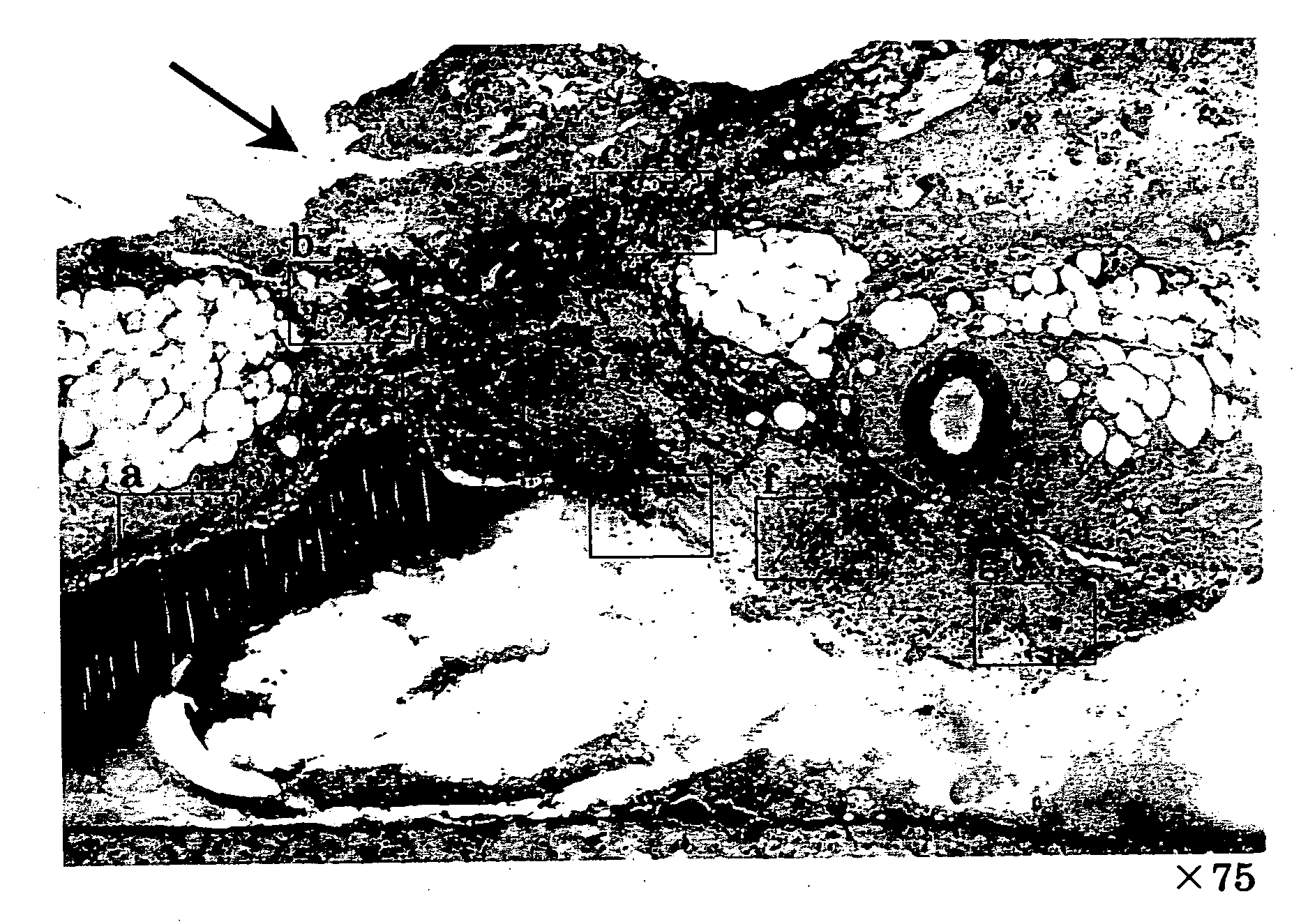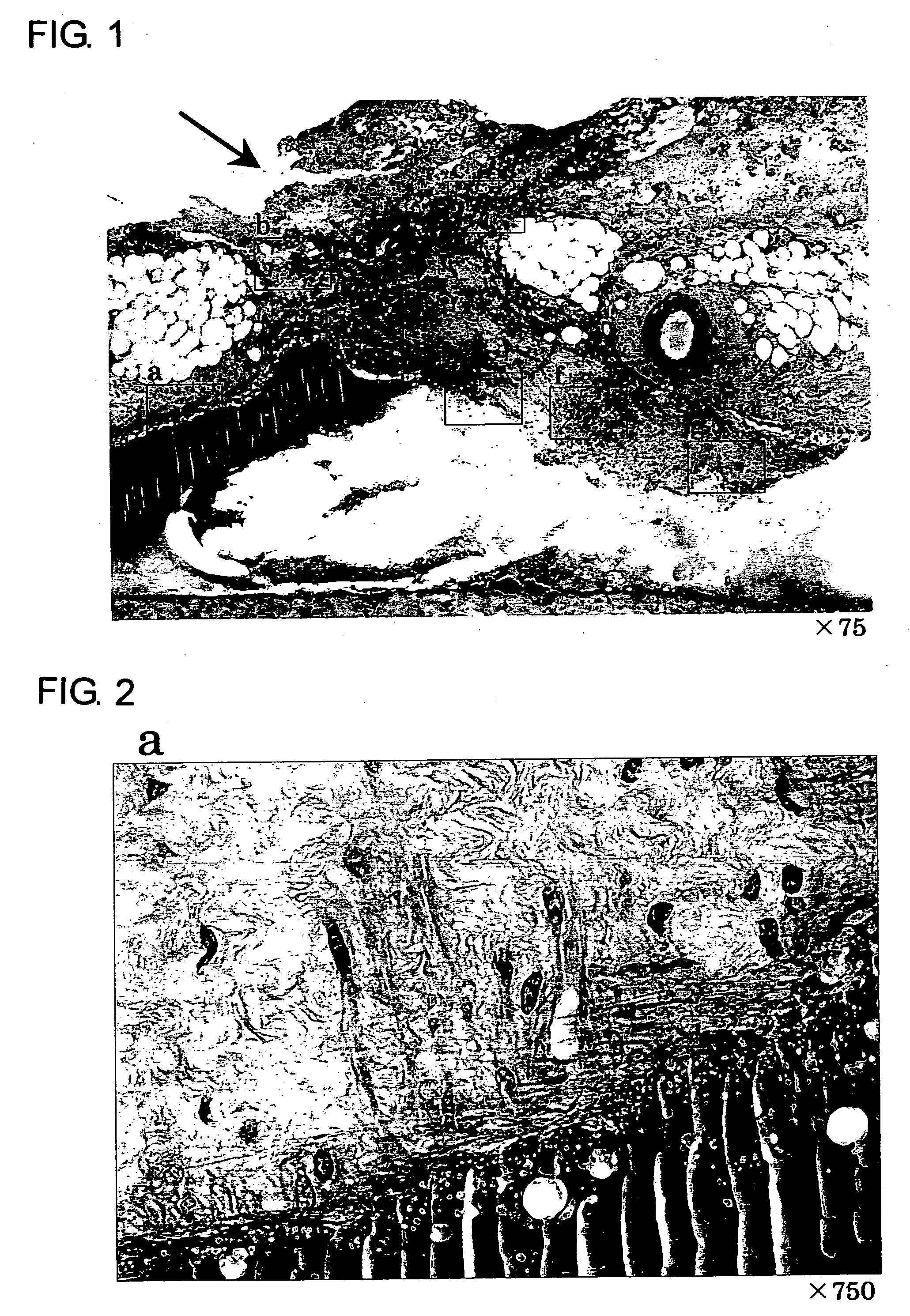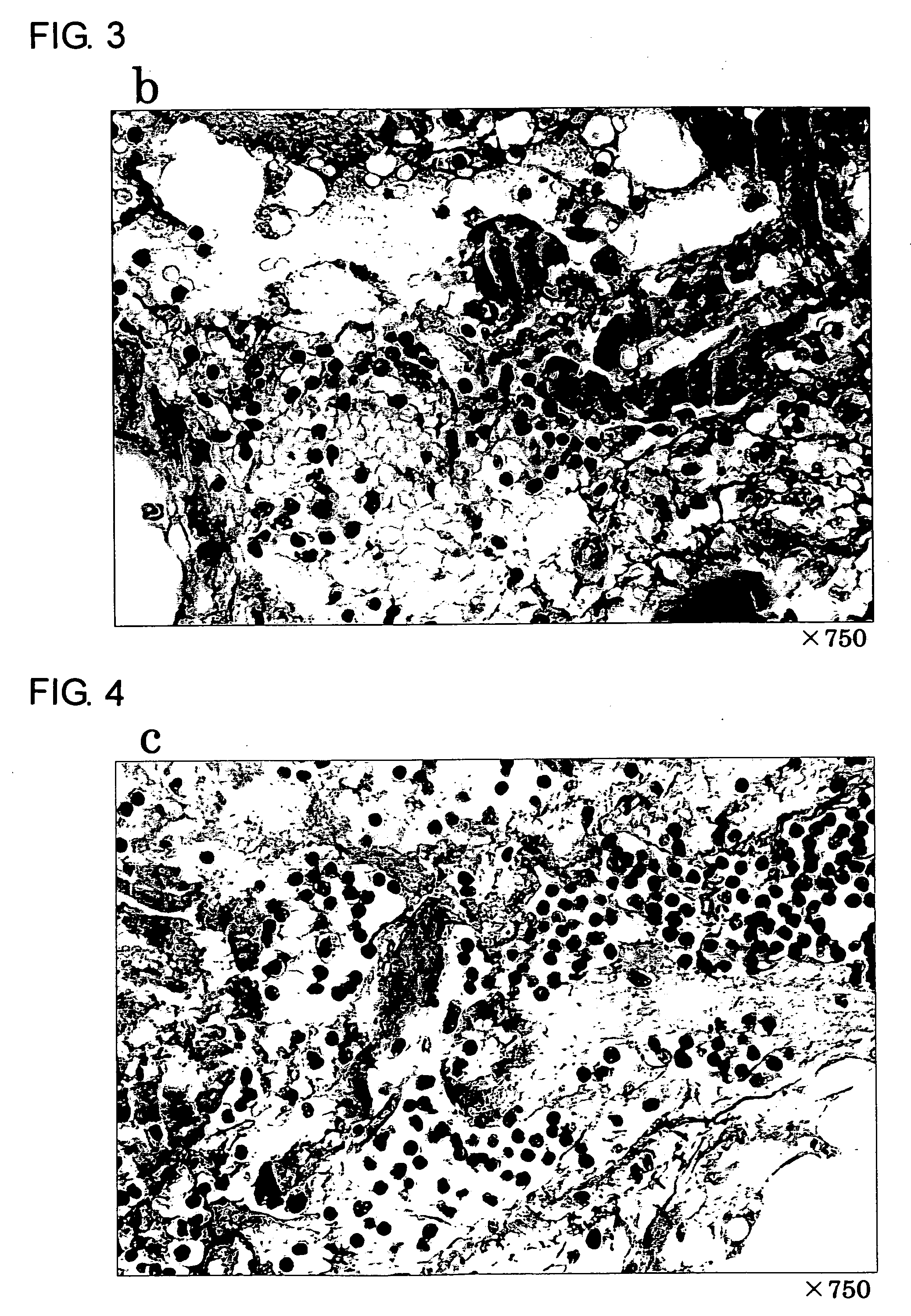Hollow Needle and Indwelling Needle Using the Hollow Needle
a hollow needle and hollow needle technology, applied in the field of hollow needles and hollow needles, can solve the problems of punctured needles, non-vital sampled tissue, and some extent of damage to tissue portions punctured by needles, and achieve the effects of less damage to tissue, long time infusion, and long time blood sampling
- Summary
- Abstract
- Description
- Claims
- Application Information
AI Technical Summary
Benefits of technology
Problems solved by technology
Method used
Image
Examples
first embodiment
[0035] Manufacturing a Hollow Needle (1)
[0036] The paste of zirconium oxide very fine powder was applied to a mold, dried and burned at 1,300 degrees Celsius for an hour to obtain a hollow needle. The mold used as the core was made from the plaster. In this manner a hollow needle having the outer diameter of 1.8 mm, wall thickness of 0.7 mm, length of 40 mm was obtained. The mold might not be easily withdrawn from the zirconium oxide hollow needle if the shrinking rate of the mold during burning is less than the shrinking rate of zirconium oxide during burning, it is preferable that the mold is made from the plaster or aluminum, which decays or melts at a lower temperature. It is to be noted here that the zirconium fine powder is also applicable. The zirconium fine powder transforms to zirconium oxide during burning. Also, the carbon core is also usable as the mold. The tip angle of the hollow needle may be acute, approximately 10 to 30 degrees according to the application. In a si...
second embodiment
[0037] Manufacturing a Hollow Needle (2)
[0038] A hard solid sheet of zirconia (zirconium oxide) having a uniform thickness of 2.5 mm was formed by kneading zirconia fine powder with water. The thickness of sheet is preferably three times the thickness of final hollow needle product. The sheet of uniform thickness was cut into a rectangular piece. A wire of the diameter of 3 mm with mineral oil applied was used as the core, the rectangular sheet was wrapped therearound firmly so as to engulf the core to form a cylinder of zirconia. The diameter of the wire is preferably 1.5 times of the outer diameter of the hollow needle final product. The cylinder made of zirconia was air-dried in a dryer room. A straight carborundum (having a diameter slightly smaller than the lumen diameter) was used for the core so as not to lose the linearity of the cylinder to rotate slowly while burning in an electric furnace at 1,300 degrees Celsius for 1 hour 30 minutes. The cylinder thus completed was coo...
third embodiment
[0039] Influence of Zirconia Hollow Needle to the Tissue
[0040] The inferior vena cava of a rat was punctured with the zirconia hollow needle made in accordance with the second preferred embodiment, the tissue three days after the punctuation was observed by a light microscope. The inferior vena cava of a rat was punctured with the zirconia hollow needle, and the needle was withdrawn two minutes after the punctuation and hemostasis was done thereafter. The tissue seen by a microscope at that time is shown in FIG. 9. Some sections of FIG. 9 labeled by A, B, C, D, E, F, and G were enlarged in FIG. 10 to FIG. 16. In FIG. 10 cell layers (endothelial layers) apposed from left to right of normal blood vessel inwall layers are clearly shown. After punctuation, as shown in FIG. 13, in contrast, a layer of the inwall layers is already restored three days after the punctuation. Also as shown in FIG. 12, FIG. 14, FIG. 15, and FIG. 16, purple tissue areas indicates the proliferation active for ...
PUM
 Login to View More
Login to View More Abstract
Description
Claims
Application Information
 Login to View More
Login to View More - R&D
- Intellectual Property
- Life Sciences
- Materials
- Tech Scout
- Unparalleled Data Quality
- Higher Quality Content
- 60% Fewer Hallucinations
Browse by: Latest US Patents, China's latest patents, Technical Efficacy Thesaurus, Application Domain, Technology Topic, Popular Technical Reports.
© 2025 PatSnap. All rights reserved.Legal|Privacy policy|Modern Slavery Act Transparency Statement|Sitemap|About US| Contact US: help@patsnap.com



